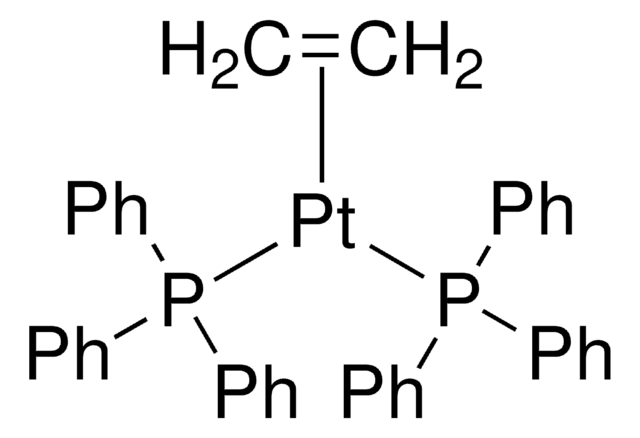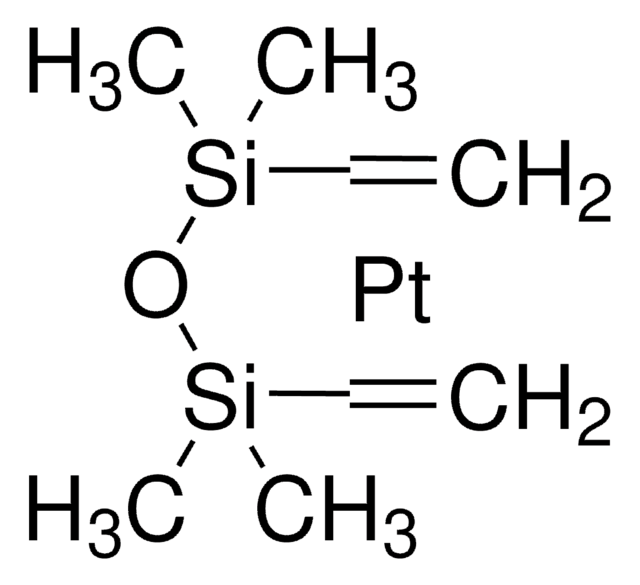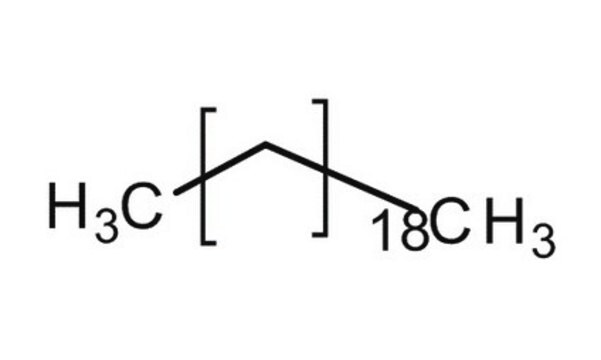All Photos(1)
About This Item
Linear Formula:
CH3(CH2)19CH3
CAS Number:
Molecular Weight:
296.57
Beilstein/REAXYS Number:
1748500
MDL number:
UNSPSC Code:
12352100
PubChem Substance ID:
NACRES:
NA.22
Recommended Products
vapor density
10.3 (vs air)
vapor pressure
<1 mmHg ( 20 °C)
assay
98%
form
solid
bp
100 °C/2 mmHg (lit.)
356.1 °C/760 mmHg
mp
39-41 °C (lit.)
SMILES string
CCCCCCCCCCCCCCCCCCCCC
InChI
1S/C21H44/c1-3-5-7-9-11-13-15-17-19-21-20-18-16-14-12-10-8-6-4-2/h3-21H2,1-2H3
InChI key
FNAZRRHPUDJQCJ-UHFFFAOYSA-N
Looking for similar products? Visit Product Comparison Guide
General description
Heneicosane is one of the important components of Carthamus tinctorius flowers essential oil, essential oil from Tragopogon graminifolius DC and essential oils from the bud of Citrus aurantium L. var. amara Engl.
Storage Class
11 - Combustible Solids
wgk_germany
WGK 3
flash_point_f
235.4 °F - closed cup
flash_point_c
113 °C - closed cup
ppe
Eyeshields, Gloves, type N95 (US)
Choose from one of the most recent versions:
Already Own This Product?
Find documentation for the products that you have recently purchased in the Document Library.
Customers Also Viewed
Jinous Asgarpanah et al.
Chinese journal of integrative medicine, 19(2), 153-159 (2013-02-02)
Carthamus tinctorius L. is commonly known as Safflower. C. tinctorius extracts and oil are important in drug development with numerous pharmacological activities in the world. This plant is cultivated mainly for its seed, which is used as edible oil. For
Ming-Hua Jiang et al.
Journal of food science, 76(9), C1219-C1225 (2012-03-16)
A comparative study of steam distillation extraction (SDE), reflux extraction (RE), and ultrasound-assisted extraction (USE) was conducted for the extraction of essential oils from the bud of Citrus aurantium L. var. amara Engl. Each method was evaluated in terms of
Mohammad Hosein Farzaei et al.
Natural product communications, 9(1), 121-124 (2014-03-26)
Tragopogon graminifolius DC., family Compositae, is widely consumed as a green vegetable in the west of Iran and for the treatment of gastrointestinal and hepatic ailments. In this study, the chemical composition of the essential oil from T. graminifolius aerial
Luana Quassinti et al.
Fitoterapia, 97, 133-141 (2014-06-14)
Smyrnium olusatrum (Apiaceae), well known as wild celery, is a biennal celery-scented plant used for many centuries as a vegetable, then abandoned after the introduction of celery. In the present work, the essential oil obtained from inflorescences and the amounts
Christian Zorzetto et al.
Fitoterapia, 100, 95-109 (2014-12-03)
In the present work we carried out a phytochemical and biological investigation on three Hypericum species, i.e. Hypericum reflexum, Hypericum canariense and Hypericum grandifolium, from the Canary Islands where they are traditionally used as diuretic, wound healing, vermifuge, sedative and
Our team of scientists has experience in all areas of research including Life Science, Material Science, Chemical Synthesis, Chromatography, Analytical and many others.
Contact Technical Service














